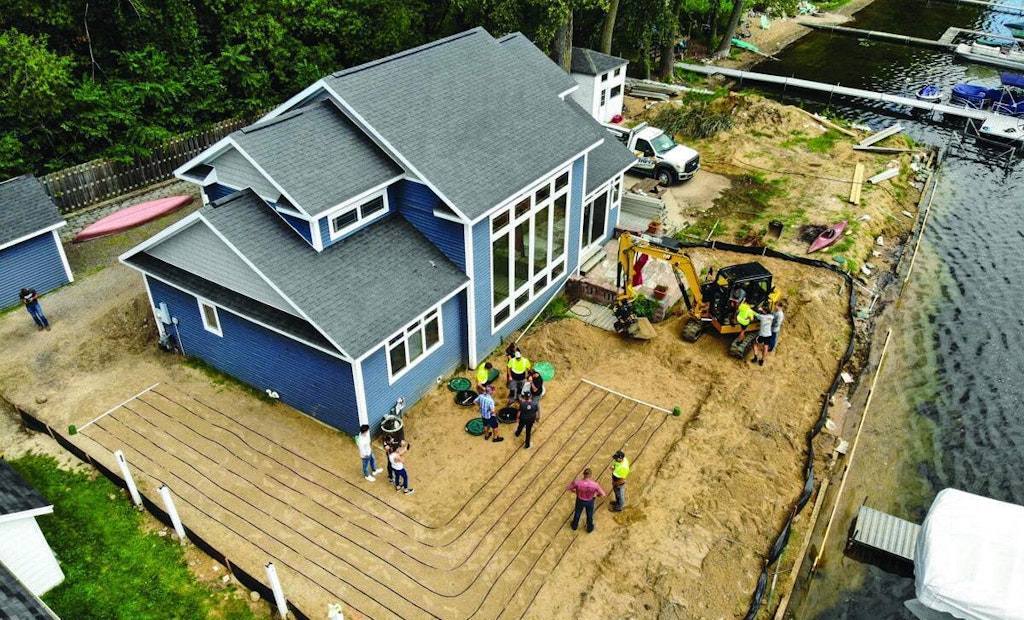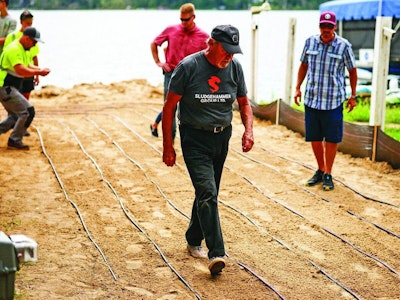
The job site near Paw Paw, Michigan, needed a different approach because of proximity to the lakeshore and to a neighboring property. A SludgeHammer unit combined with a Geoflow dripfield solved the problem. (Photos courtesy Lucian Witmer, Dig-It Excavating)
The homeowner on Lake Cora near Paw Paw, Michigan, was not in a good situation.
“He had been running quite a few years on holding tanks,” says Dervin Witmer, owner of Dig-It Excavating in Cassopolis, Michigan, who was hired to create an onsite system for the house.
The...









